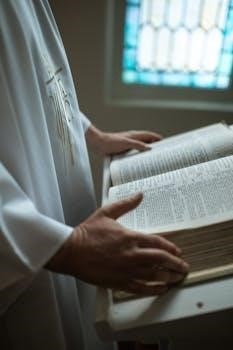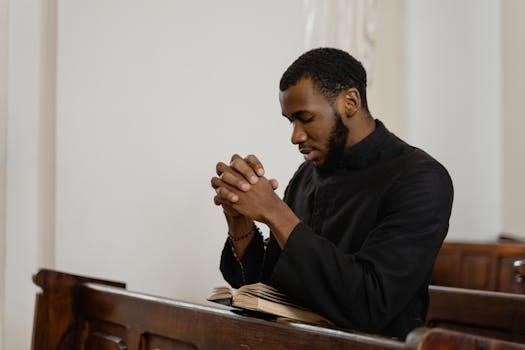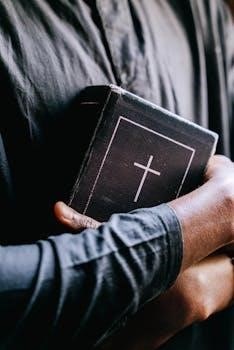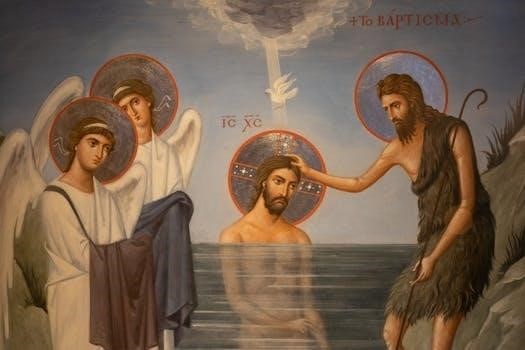While Freemasonry is not explicitly mentioned in the Bible, it utilizes biblical texts and principles. Freemasons find symbolic meaning and moral lessons within the scriptures, reflecting a deep desire for connection and meaning.
The Role of the Bible in Freemasonry
The Bible serves as a Volume of Sacred Law within Freemasonry, not necessarily as a religious text, but as a symbol of divine guidance and moral truth. It’s open during lodge meetings, representing the presence of a higher power. Masonic teachings draw from biblical stories and allegories to impart ethical principles. The focus is on the symbolic interpretation of biblical narratives to encourage self-improvement. While not a religious organization, Freemasonry uses the Bible as a tool for its members to gain insight into morality and spirituality. The biblical text is not the focus but the symbolism and lessons it provides are.
Masonic Bibles⁚ Purpose and Significance
Masonic Bibles are not separate versions, but rather heirloom editions used within lodges. They symbolize the importance of spiritual and moral guidance, often carrying significant personal and fraternal value.
Heirloom Editions and Symbolic Value
Masonic Bibles often serve as treasured heirlooms, passed down through generations of Freemasons. These editions are not unique translations but rather specific copies of the Bible, often the King James Version. Their value lies in their symbolic representation of faith, morality, and the continuity of Masonic tradition. The physical Bible, therefore, becomes a tangible link to the past, present, and future of a Freemason’s journey within the fraternity, imbued with personal and fraternal significance, and used to record masonic events, and for commentary on masonic characters.
Biblical Interpretations in Masonic Rituals
Freemasonry incorporates specific biblical verses within its rituals. These verses are not taken literally, but are used to convey moral and ethical lessons to members, often memorized.
Specific Verses and Their Masonic Meanings
Masonic rituals often employ specific biblical verses to illustrate moral and ethical concepts. These verses are not interpreted in a literal sense, but rather allegorically, providing lessons on virtue, integrity, and the pursuit of knowledge. The verses might be used to highlight themes of brotherhood, charity, and the importance of personal growth within the Masonic framework. The King James Version is often the preferred translation. Freemasons seek to extract symbolic meaning from these verses, emphasizing their practical application in daily life and in the broader Masonic experience, rather than theological doctrine.

Freemasonry’s Universal Approach to Deity
Freemasonry embraces a universal concept of a Supreme Being, allowing members of diverse faiths to participate. This inclusivity extends to Muslims, Hindus, and individuals of other religious beliefs.
Acceptance of Various Religious Beliefs
Freemasonry does not require adherence to a specific religious doctrine, instead emphasizing a belief in a Supreme Being, regardless of how that being is defined by different faiths. This allows individuals from diverse backgrounds, including Islam and Hinduism, to participate, fostering an environment of religious tolerance. The focus is on shared moral principles and the pursuit of self-improvement, rather than strict adherence to religious dogma. This acceptance is central to Freemasonry’s inclusive philosophy, providing a common ground for men of different faiths to unite.

Historical Context of Freemasonry
Freemasonry evolved from the guilds of operative masons who constructed cathedrals in Europe. These early masons were skilled craftsmen, and their traditions laid the foundation for modern Freemasonry.
Origins in Operative Mason Guilds
The roots of Freemasonry lie in the operative mason guilds of medieval Europe. These guilds were comprised of skilled stoneworkers who constructed cathedrals and other significant buildings. They developed unique systems of recognition and shared knowledge, which were closely guarded. Over time, these practical working guilds evolved into speculative masonry, where the tools and practices of stoneworking became allegorical representations of moral and spiritual principles. This transition marks the shift from physical construction to the symbolic building of character within Freemasonry.

Symbolism and Allegory in Freemasonry
Freemasonry employs a rich system of symbols and allegories, drawing from the tools of stonemasons. These symbols represent moral lessons and spiritual concepts, guiding members in their personal development.
The Legend of Hiram Abiff and its Meaning
The legend of Hiram Abiff, a master craftsman, is central to Freemasonry. It narrates his tragic murder by three ruffians, symbolizing human vices. This allegory teaches about loyalty, integrity, and the pursuit of knowledge despite adversity. The narrative emphasizes the triumph of good over evil and the importance of moral fortitude. This legend serves as a powerful reminder of the human struggle against inner darkness and the quest for spiritual enlightenment. The legend encourages Masons to strive for virtue and resist temptation;
The Influence of Kabbalah
Some Masonic texts and figures acknowledge Kabbalah’s influence. They identify Masons as followers of Noah. References to Kabbalistic ideas appear in certain Masonic symbolism and teachings.
References to Kabbalistic ideas
Certain Masonic writings and prominent figures within Freemasonry have acknowledged the presence of Kabbalistic influences on some aspects of their traditions. These references often involve interpretations of symbolism and esoteric concepts that bear resemblance to Kabbalistic thought. The identification of Masons as followers of Noah, a figure of great significance in Kabbalistic lore, further highlights the connections. While not universally embraced, these references suggest that some streams of Freemasonry have incorporated elements from Kabbalah, integrating them into their philosophical and symbolic framework. Such incorporations are often seen as paths to deeper understanding.
The King James Version and Other Translations
The King James Version of the Bible is frequently used in Freemasonry, though other translations may be referenced. These alternative translations can offer different perspectives on scriptural passages.
Use of specific versions of the Bible
Freemasonry often employs the King James Version of the Bible, although other translations might be consulted for deeper understanding. The choice of the King James Version stems from its historical significance and its widespread use during the formative years of Freemasonry. Different translations can sometimes provide alternate interpretations, enriching the understanding of biblical passages used within Masonic teachings and rituals. Specific verses from these texts are integral to the degree work, often requiring memorization for the participating members. This approach highlights the importance of scripture within the Masonic tradition.

Masonic Texts and Symbolism
Masonic texts, supplemented by monitorial works, offer interpretations of symbols. These interpretations enrich understanding, guiding both new and seasoned Masons in their quest for deeper meaning within the craft.
Interpretation of Masonic symbols
Masonic symbols, such as the square and compass, are not merely decorative; they represent core principles. The all-seeing eye symbolizes knowledge and awareness, while the open book signifies the importance of learning. These symbols, along with tools of the mason’s trade, offer a complex language that can be read with profit by both new and old Masons, enriching their understanding of the craft’s teachings and their personal journey. They are not literal but allegorical, guiding members to self-improvement and moral development within the Masonic fraternity.
Freemasonry and the Quest for Meaning
Freemasonry appeals to a deep human desire for connection and purpose. It offers a framework for self-discovery, moral improvement, and a sense of belonging within a fraternal order.
Deep Human Desire for Connection and Purpose
Freemasonry, at its core, taps into the fundamental human longing for connection and purpose. It provides a structured environment where individuals can explore their spirituality, ethical values, and moral compass. The fraternal aspect fosters a sense of belonging and shared experience, while the ritualistic elements invite introspection and self-improvement. This quest for meaning resonates with many, regardless of their specific religious background, as Freemasonry offers a path to personal growth within a supportive community, addressing the inherent human desire for something beyond the mundane.





